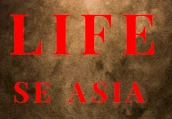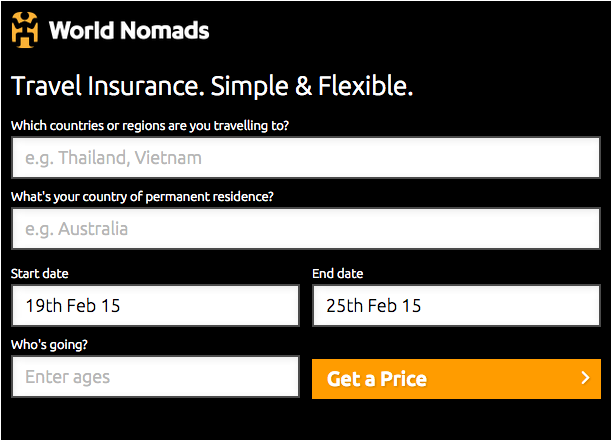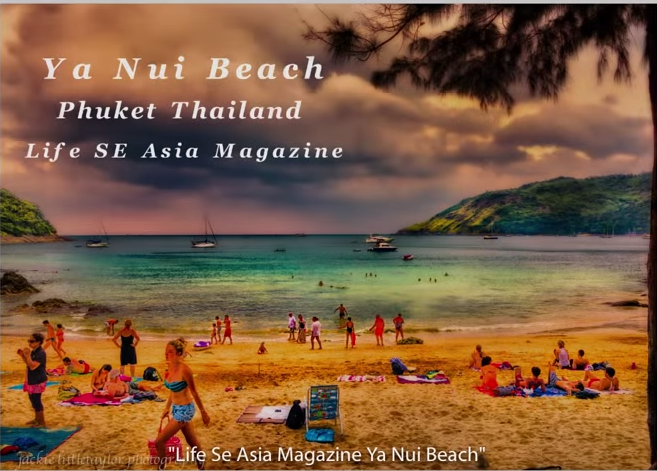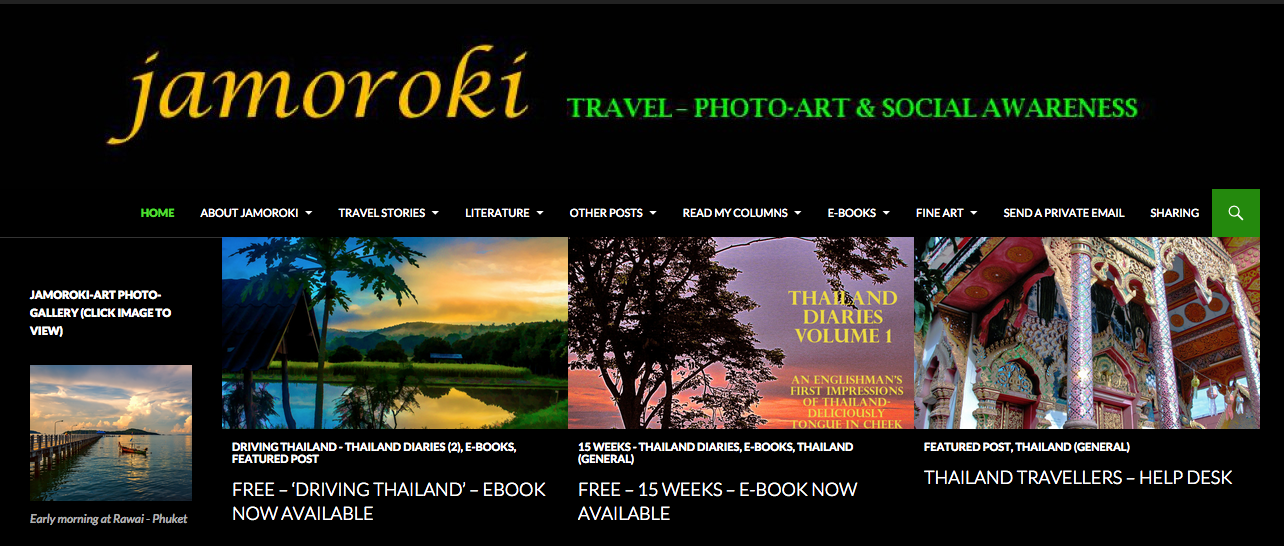General Visa information
we are not lawyers and this is just general information on getting a visa , types, and what is required. Check with you Country Embassy for more information.
The Ministry of Foreign Affairs and International Cooperation has launched e-Visa, which enables you to apply for a Cambodia tourist visa online. Instead of applying through Cambodian Embassy, all you need to do is to complete the online application form and pay with your credit card. After receiving your Visa through email, print it out and bring it along when you travel to Cambodia.
For the web site LINK for the E-VISA
The Above information was taken from The Ministiy of Foreign Affairs and International Cooperation of the Kingdom of Cambodia
Update on a travelers visit
First of all, thank you for compiling all this useful information!
I am in Cambodia at the moment and it seems the 1 month tourist visa cost has increased. I heard the official cost is now 30$, even though in some land borders they charge 35$.
I have seen ATMs in smaller cities as Stung Treng and Ban Lung, and some (or all?) banks seem to charge a commission of 4$ for a transaction with an international card.
Entry at a port
Entry requirements
Visas
You can get a visa on arrival at most ports of entry. Payment is in $US only. You will need to bring 2 passport photos.
A business visa costs US $25 for 1 month and can be renewed indefinitely. A tourist visa costs US $20 for 1 month and can be extended for only 1 extra month.
In order to leave Cambodia you will require an exit visa, this will be given to you on entry to the country. If you lose your exit visa or passport with the visa inside you will need to obtain a new exit visa at a cost of $40 from the Cambodian Immigration Department. The offices are found on No 332, Russian Boulevard, Phnom Penh, Cambodia. The exit visa will take up to three working days to be processed.
Passport validity
Your passport should be valid for a minimum period of 6 months from the date of entry into Cambodia. Entry is normally refused if you have a damaged passport or pages missing.
Work permits
To work in Cambodia, you’ll need a valid business visa and a valid work permit. Business visas are issued by the Immigration Department and are usually available on arrival in Phnom Penh airport, or at the Immigration Department. You may be able to apply for a Business visa in advance at your nearest Cambodian Embassy. Your employer will need to apply for your work permit from the Department of Labour and Social Affairs.
The Cambodian government is enforcing these rules more strictly than in previous years. There is some uncertainty about whether the government will impose charges retroactively on individuals who did not have valid work permits previously. Procedures are subject to change and you should always consult the relevant Cambodian government department for the latest advice.
Quick Facts
-
PASSPORT VALIDITY:
Six months
-
BLANK PASSPORT PAGES:
One page is required for entry stamp
-
TOURIST VISA REQUIRED:
Yes
-
VACCINATIONS:
None
-
CURRENCY RESTRICTIONS FOR ENTRY:
The import of local currency (Riel) is prohibited. When entering Cambodia, foreign currency amounts over US $10,000 must be declared.
-
CURRENCY RESTRICTIONS FOR EXIT:
The export of local currency (Riel) is prohibited. Foreign currency can be taken out of the country up to the limit declared at customs on arrival.
Cambodian immigration officials at airports now collect fingerprints upon entry using an inkless, electronic process. You will need two passport-sized (4cm by 6cm) photographs and a passport valid for a minimum of six months beyond the date of entry into Cambodia. Cambodia regularly imposes fines for overstay of an expired visa. If the overstay is 30 or fewer days, the charge is USD $5.00 per day; for overstays of more than 30 days, the charge is USD $6.00 per day. You should contact the nearest embassy or consulate of Cambodia or visit the Embassy of the Kingdom of Cambodia website for the most current visa information.
From the US State Dept.
CRIME: Cambodia has a high crime rate, including street crime. Military weapons and explosives are readily available to criminals despite authorities’ efforts to collect and destroy such weapons. Armed robberies occur frequently, and foreign residents and visitors, including U.S. citizens, are among the victims. The Embassy has also received reports that hotel rooms of U.S. citizen visitors in Phnom Penh were burglarized while the occupants were asleep.
The most common type of theft is “snatch and grab” robbery, and anything that can be quickly grabbed is at risk: cameras, jewelry, purses, backpacks, mobile phones, etc. Exercise caution and keep belongings out of sight if you travel via “tuk-tuk,” as passengers in these open-air vehicles have been targeted by thieves. If walking along the street, make yourself less of a target by carrying bags or items in your hand or on the shoulder that is furthest from the street. If someone attempts to rob you, you should surrender your valuables immediately, since any perceived resistance may be met with physical violence, including lethal force. The U.S. Embassy frequently receives reports of violent robberies that escalate into fatalities. In September 2013, a U.S. resident was shot in the leg during an armed robbery. In October 2013, a U.S. tourist was killed on the tourist island of Koh Rong off the coast of Sihanoukville. In April 2014, a Dutch resident and her young child were stabbed to death after an intruder entered her home attempting to steal a bicycle.
Financial Transactions: The U.S. dollar is widely used, especially for larger transactions, and most prices are quoted in dollars. Ripped or torn U.S. bills are not accepted. The Cambodian riel can also be used, but it is less favored and is mostly given to tourists as change for dollar purchases. The riel is commonly used in smaller towns and rural areas. Credit cards are increasingly accepted within Cambodia, and a number of banks in Phnom Penh accept Visa cards for cash advances. Credit cards are often subject to a service charge. Banks and major hotels accept travelers’ checks but usually charge a service fee. Several international banks operate ATM machines that allow travelers to obtain U.S. dollar currency in Phnom Penh, Siem Reap, and other urban centers. Personal checks are not generally accepted. Several banks serve as Western Union agents, to which funds can be wired, including in Phnom Penh, Siem Reap, Sihanoukville, and other provincial cities. Information on Western Union can be found at their website.
Photography: Taking photographs of anything that could be perceived as being of military or security interest — including government buildings, military installations, airfields, and bridges — may result in problems with the authorities and confiscation of your camera.
Health
Medical facilities and services in Cambodia do not meet international standards. Both Phnom Penh and Siem Reap have a limited number of internationally-run clinics and hospitals that can provide basic medical care and stabilization. Medical care outside of these two cities is almost non-existent. Local pharmacies provide a limited supply of prescription and over-the-counter medications, but because the quality of locally obtained medications can vary greatly, make sure to bring a supply of your medications that is adequate for the duration of your stay in Cambodia. You should be wary of purchasing local medication. Counterfeit medication is readily available, often indiscernible from authentic medication, and potentially lethal.
You can find detailed information on vaccinations and other health precautions on the CDC website. For information about outbreaks of infectious diseases abroad, consult the World Health Organization (WHO) website, which contains additional health information for travelers, including detailed country-specific health information.
Tuberculosis is an increasingly serious health concern in Cambodia. For further information, please consult the CDC’s information on TB.
AVIATION SAFETY OVERSIGHT: As there is no direct commercial air service to the United States by carriers registered in Cambodia, the U.S. Federal Aviation Administration (FAA) has not assessed the government of Cambodia’s Civil Aviation Authority for compliance with International Civil Aviation Organization (ICAO) aviation safety standards.
We recommend having travel insurance Click HERE for more information
ATMS and Currency
ATM
ATMs There are now ATMs with international access in Phnom Penh, Siem Reap, Sihanoukville, Kampot and Battambang. ANZ Royal Bank and Canadia Bank ATMs both accept Cirrus, Plus, Maestro, Visa and MasterCard systems. SBC Bank ATMs accept Visa and MasterCard. All ATMs dispenses US dollars.
Cambodia runs on US Dollars, thus the ATM machines dispense USD (although there are some where you can choose to have Khmer riels, but they are almost useless for tourists). US Dollar bills cannot have any marks, tears, or signs of wear. As for Khmer riels, they can be dirty and marked to the point you hardly recognize the value…
Since 2005, the ATM network has steadily increased. ACLEDA Bank has the most extensive network, with ATMs across the country and even in the smallest of places. ATMs of ANZ/Royal Bank are concentrated in the capital Phnom Penh and in tourist places like Siem Reap and Sihanoukville.
Large withdrawals of up to US$2000 are possible, providing your account can handle it. Stay alert when using them late at night. ANZ Royal Bank has the most extensive network, including ATMs at petrol stations and popular hotels, restaurants and shops, closely followed by Canadia Bank. Acleda Bank has the widest network of branches in the country, including all provincial capitals, and many have ATMs. However, these are not yet compatible with international credit cards, although rumours are that they will be upgraded soon.
Read more: http://www.lonelyplanet.com/cambodia/practical-information/money-costs#ixzz3KMkZRDVF
Currency
The US dollar remains king in Cambodia. Armed with enough cash, you won’t need to visit a bank at all because it is possible to change small amounts of dollars for riel at hotels, restaurants and markets. Hardened travellers argue that your trip ends up being slightly more expensive if you rely on US dollars rather than riel, but in reality there’s very little in it. However, it never hurts to support the local currency against the greenback. It is always handy to have about US$10 worth of riel kicking around, as it is good for motos, remorque-motos and markets. Pay for something cheap in US dollars and the change comes in riel. In remote areas of the north and northeast, locals only deal in riel or small dollar denominations.
Cambodia’s official currency is the riel, which is named after the fish used to make prahok, a fermented fish paste.
The riel comes in denominations of 50, 100, 200, 500, 1000, 2000, 5000, 10.000, 50.000 and 100.000 (although the latter two are very rare).
Coins are not used in Cambodia. The riel fluctuates around4000 riel to a dollar.
Riels are mainly used in markets and to buy small items, like a bottle of water or to pay for small services like a moto or tuktuk ride
Keep in mind though that moto and tuk tuk drivers always claim they have no change (well, at least for foreigners…), so be sure you have the exact amount ready!
US Dollars are widely accepted in Cambodia and actually serve as a second currency. US dollars are used for larger bills.
Don’t expect small shop venders to have change of anything more than a $5 note, and do expect small change in riel.
Check your US dollars carefully as notes with a small tear arenot accepted, especially the larger denominations of 5 dollars and more.
You don’t need to change dollars into riel when entering the country as you will inevitably pay a lot of things in dollars and receive change in riel, which you can use for smaller purchases.
The only other currency that can be useful is Thai baht, mainly in the west of the country. Prices in towns such as Krong Koh Kong, Poipet and Sisophon are often quoted in baht, and even in Battambang it is as common as the dollar.
There are no banks at any of the land border crossings into Cambodia, meaning credit cards and travellers cheques are effectively useless on arrival, although there will likely be ATMs in Poipet in the near future. In the interests of making life as simple as possible, organise a supply of US dollars before arriving in Cambodia. Cash in other major currencies can be changed at banks or markets in Phnom Penh or Siem Reap. However, most banks tend to offer a miserable rate for any nondollar transaction so it can be better to use moneychangers, which are found in and around every major market.
Cambodia’s official currency is the riel, but you’ll see many people using the US Dollar to pay for everyday expenses. Don’t be fooled into changing dollars into riel at the land border crossings! The touts will tell you that the dollar is now not used anymore, so you have to change into riel at their ridicolous low exchange rate.
DO NOT BELIEVE any story like that.
Banks
There are banks in all provincial capitals in the country, including Phnom Penh, Siem Reap, Sihanoukville, Kampot and Battambang. Banks offer the usual banking services – cash advances on credits cards (most accept Visa card,) international currency exchange, telegraphic transfers, cash travelers checks and ANZ Royal Banks, Canadia and SBC Banks offer ATMs with international access. Most banks are open from 8:00 to 15:00 or 16:00PM, Monday through Friday. Some are open Saturday mornings until 11:30. ATMs are available 24 hours
Credit cards
Credit Cards In the major tourist towns, credit cards are accepted at most upscale hotels, shops and restaurants, some mid-range place and a growing number of other businesses. Credit cards are general not accepted at any businesses outside of Phnom Penh, Siem Reap, Sihanoukville and the casinos in Poipet. Visa, MasterCard (MC) and JCB cards are the most widely accepted credit cards in Cambodia. AMEX is coming into wider use, as well as the new ANZ Bluespot card. Diners Club (DC) is accepted at very few place. Most businesses charge a 2%-4% fee to accept credit cards.
Travelers Checks Travelers checks are accepted at most banks, major hotels and restaurants and some money changers. AMEX in US dollars are the most widely accepted travelers checks.
Cash Transfers ‘Instant’ cash transfers can be done through MoneyGram or Western Union. Ordinary telegraphic transfers are available at all major banks.
We welcome comments and invite you to share your experience
Journals
Travel insurance: simple & flexible
You can buy, extend and claim online, even after you’ve left home. Travel insurance from WorldNomads.com is available to people from over 140 countries. It’s designed for adventurous travellers with cover for overseas medical, evacuation, baggage and a range of adventure sports and activities.


















First of all, thank you for compiling all this useful information!
I am in Cambodia at the moment and it seems the 1 month tourist visa cost has increased. I heard the official cost is now 30$, even though in some land borders they charge 35$.
I have seen ATMs in smaller cities as Stung Treng and Ban Lung, and some (or all?) banks seem to charge a commission of 4$ for a transaction with an international card.
LikeLiked by 1 person
Thank you very much Your comments help my energy levels to keep at this!!! I am a photographer and would rather be out taking the photos! haha jackie I will add your comments Thanks again!
LikeLiked by 1 person
Thanks again I added your experience to the post Thanks jackie
LikeLiked by 1 person
There is a link your blog!! so you know jackie
LikeLike